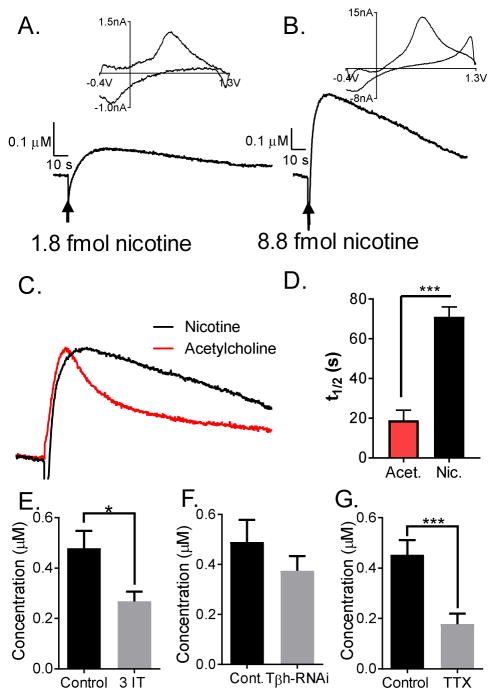Figure 3.
Nicotine stimulates dopamine release in the VNC, and the release is mediated by presynaptic nAchRs. (A–B) Current vs. time plot (bottom) and cyclic voltammogram (top) obtained upon nicotine stimulation in Drosophila larval VNC. (A) Example 1.8 fmol stimulation. (B) Example 8.8 fmol stimulation. (C) Example traces of nicotine or acetylcholine stimulated responses are normalized for height and overlaid to visualize the difference in t1/2. (D) The t1/2 is different for acetylcholine (1.8 pmol) and nicotine (8.8 pmol) stimulation (unpaired t-test, p<0.0001, n=7). (E) In flies fed dopamine synthesis inhibitor, 3 iodotyrosine, the current response is significantly lower (unpaired t -test, p = 0.0345, n = 5–6), which confirms that the response is due to dopamine. (F) Nicotine stimulated response is not significantly different than control in flies with a knockdown of octopamine synthesis (Tdc2-GAL4; UAS-RNAiTβH) (unpaired t-test, p = 0.3250, n = 4). (G) In the presence of sodium channel inhibitor, tetrodotoxin, the current response is significantly lower than control (paired t -test, p = 0.0007, n = 7), which shows that the release is mediated by presynaptic nAchRs.

